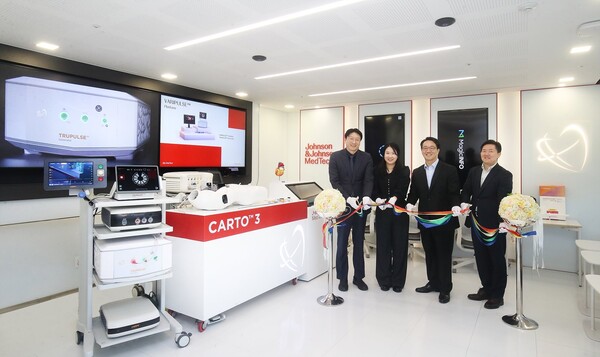Johnson & Johnson MedTech, a division of Johnson & Johnson (J&J) focused on cardiovascular, orthopedic, and surgical solutions, announced the opening of a new medical technology training center at its Yongsan headquarters in Seoul on Wednesday.

The center will offer hands-on training for Korean healthcare professionals on the company’s latest orthopedic robotic surgical devices and arrhythmia treatment technologies.
It will feature two dedicated facilities—one for orthopedics and one for cardiovascular treatments—aiming to familiarize medical professionals with cutting-edge devices launched this year.
A key focus will be the VELYS Robotic-Assisted Solution (VELYS RAS), an orthopedic surgical robot that helps surgeons plan and perform knee replacement surgeries with greater precision by analyzing patient-specific anatomical data.
In cardiovascular care, the center will introduce the VARIPULSE catheter and TRUPULSE generator, components used in pulsed field ablation (PFA), an innovative treatment for arrhythmias.
Recognized for its safety and efficacy through Korea’s new medical technology evaluation process, PFA reduces heat-induced damage to surrounding cardiac tissue, preserving the heart’s structural integrity. The technology also allows for real-time 3D visualization of the procedure, enabling more precise and effective treatment.
Related articles
- Medtronic opens Korea's 1st robotic surgery research and training center in Osong
- SNUH to build a regional emergency medical safety net in Cameroon
- Philips Korea to launch digital pathology reference site at Seoul Clinical Laboratories
- J&J MedTech and Hutom to co-promote AI-based surgical navigation platform
- Orthopedists' group urges overhaul of severity classification as hospital reforms squeeze care
- J&J MedTech launches new Pulsed Field Ablation platform to treat atrial fibrillation
- Severance, ‘Korea’s 1st’ international training center for 3D pulsed field ablation
- Myongji Hospital successfully performs PFA for atrial fibrillation
- Severance becomes Korea’s 1st to complete 100 Varipulse PFA procedures

